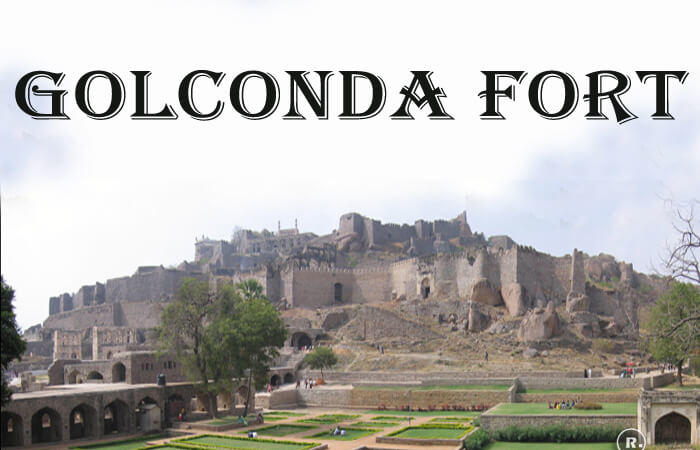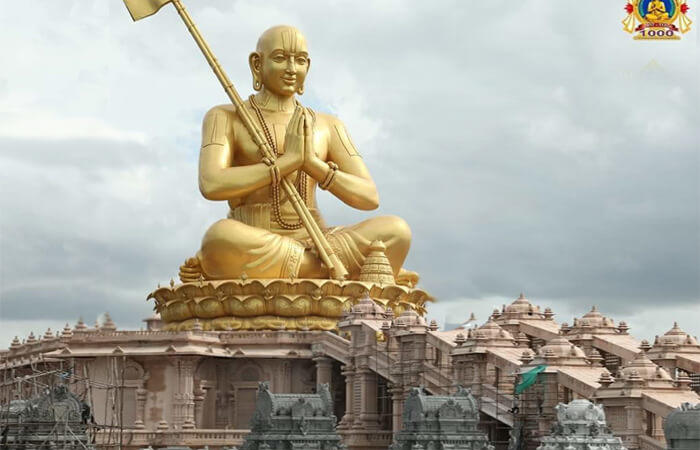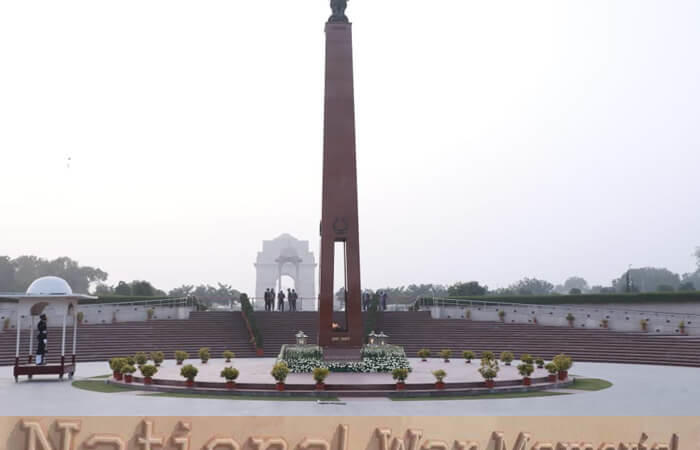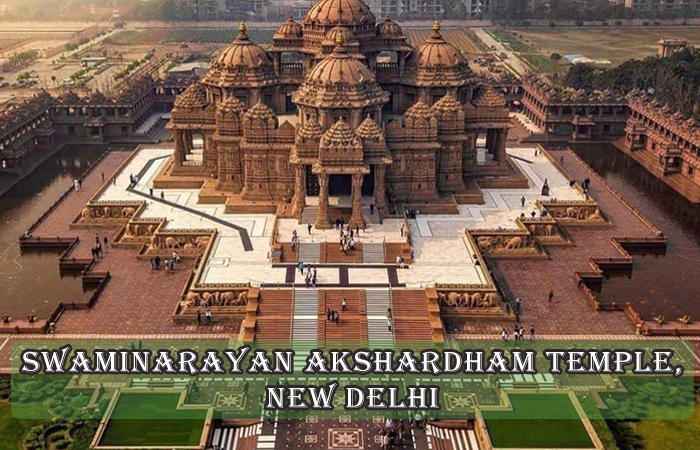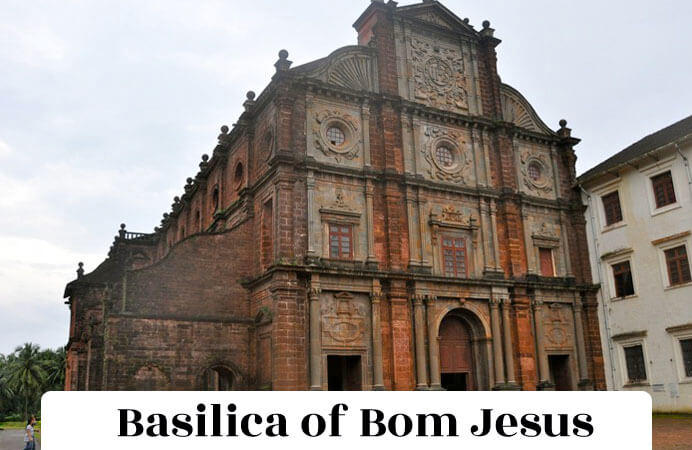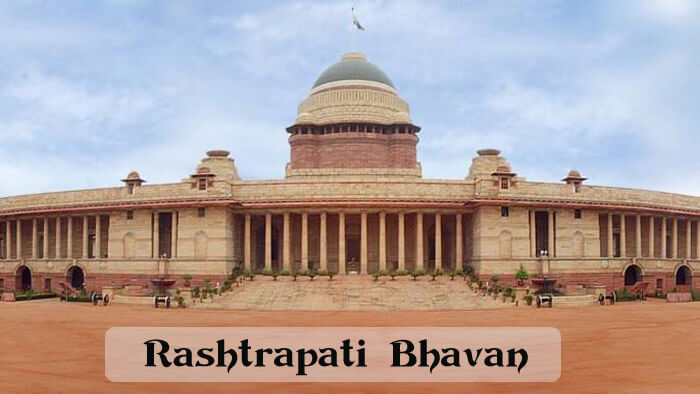Jantar Mantar, Delhi – Information, History, Facts
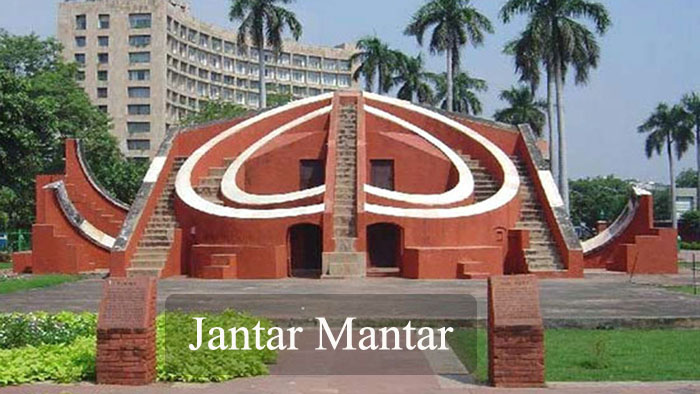
Location: Parliament Street, Near Connaught Place (New Delhi) and Jaipur
Founded By: Maharaja Jai Singh II of Jaipur
Founded In: 1724
Timings: Sunrise to Sunset (Daily)
Type of Structure: An Astronomical Observatory
Status: Protected Monument under ASI Act
Interesting Facts: Jantar Mantar was the logo of the 1982 Asian
Games
History
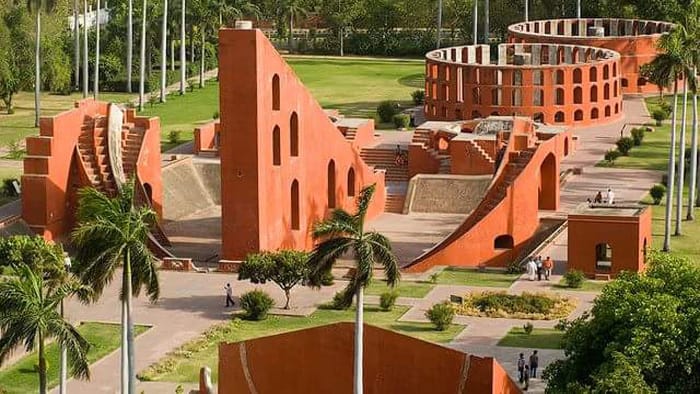
The Jantar Mantar is a collection of architectural astronomical instruments, built by Maharaja Jai Singh II at his then-new capital of Jaipur between 1727 and 1733. It is modeled after the one that he had built for him at the then Mughal capital of Delhi. He had constructed a total of five such labs at different locations, including the ones at Delhi and Jaipur. The Jaipur observatory is the largest of these.
The name is derived from yantra, instrument, and mantra, for formula or in this context calculation. Therefore Jantar Mantar means literally calculation instrument.
The observatory consists of fourteen major geometric devices for measuring time, predicting eclipses, tracking stars in their orbits, ascertaining the declinations of planets, and determining the celestial altitudes and related ephemerides. Each is a fixed and ‘focused’ tool. The Samrat Jantar, the largest instrument, is 90 feet high, its shadow carefully plotted to tell the time of day. Its face is angled at 27 degrees, the latitude of Jaipur. The Hindu chhatri (small domed cupola) on top is used as a platform for announcing eclipses and the arrival of monsoons.
Suggested Read: Delhi – Culture and Tradition
Description
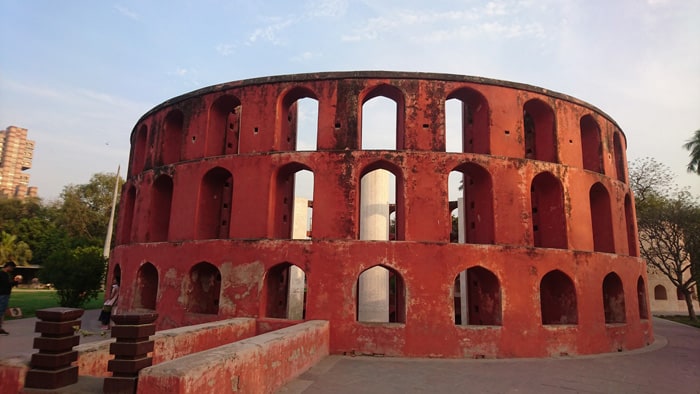
Built of local stone and marble, each instrument carries an astronomical scale, generally marked on the marble inner lining; bronze tablets, all extraordinarily accurate, were also employed. Thoroughly restored in 1901, the Jantar Mantar was declared a national monument in 1948.
An excursion through Jai Singh’s Jantar is the singular one of walking through solid geometry and encountering a collective weapons system designed to probe the heavens.
The instruments are in most cases huge structures. They are built on a large scale so that the accuracy of readings can be obtained. The Samrat Yantra, for instance, which is a sundial, can be used to tell the time to an accuracy of about two seconds in Jaipur local time.1 It is considered the largest sundial in the world. Today the main purpose of the observatory is to function as a tourist attraction.
Suggested Read: Red Fort – Lal Quila
Interesting Fact about Jantar Mantar
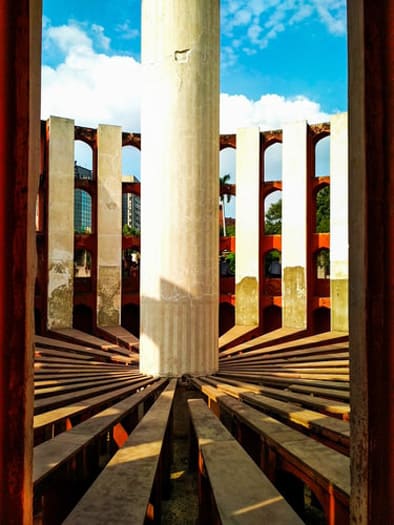
-
The great Indian astronomer-king Maharaja Jai Singh II of Jaipur built five astronomical observatories between AD 1724 and 1730, during the period generally known as the dark age of Indian history.
Suggested Read: India Gate Delhi
-
He was inspired by the 15th-century Afghani ruler Ulughbek’s observatory at Samarkand.
-
The Jantar Mantar consists of a number of masonry instruments for predicting time, measuring the position of a celestial body, and determining the latitude. It features the world’s largest stone sundial which provides information about the time and position of the planets with the help of the sun.
-
The structures consist of brick and marble towers and pillars, with no telescopic elements at all, yet through solar shadow movements and careful sightings, the local time, and positions of the moon, stars and planets could be determined with great accuracy.
-
These instruments include the Brihat Samrat Yantra, the Rama Yantra, and the Jai Prakash Yantra installed to inform about the movement of celestial bodies.
-
The Brihat Samrat Yantra is a huge sundial that gives the local time in New Delivery accurately. The Rama and Jai Prakash Yantras measure precise positions of celestial bodies in the night sky.
Suggested Read: Qutub Minar Delhi, Alai Darwaza
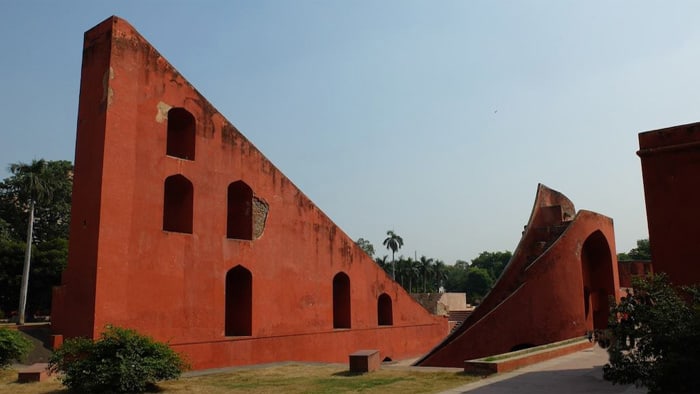
-
The Jantar Mantar observatory in Delhi comprises 13 astronomical instruments of which four are primary devices. These are Samrat Yantra, the Jayaprakash Yantra, the Rama Yantra, and the Misra Yantra. Most of these instruments were designed by Maharaja Jai Singh II.
Suggested Read: Humayun Tomb Delhi
-
When the Sun is high in the sky, the pillar at the center of Rama Yantra casts a shadow either on the vertical well surrounding the pillar or the raised floor segments radiating from the pillar.
-
The two pillars on the southwest of Mishra Yantra were designed to determine the shortest and longest days of the year. In December one pillar completely covers the other with its shadow while in June it does not cast any such shadow at all.
-
There are five Jantar Mantar in India. Apart from New Delhi, other observatories are at Varanasi, Mathura, Ujjain, and Jaipur.
-
The name Jantar Mantar is derived from two words Jantar or yantra meaning instrument and mantra, which means calculate. So when putting together, these words mean ‘calculation instrument’.
-
On Science Day, the position of Earth’s brightest planet Venus was measured by the leading astronomer through the Ramayantra installed at Jantar Mantar in Delhi. The study included astronomers of the Nehru planetarium, as well as members of the Amateur Astronomers Association and the NGO Space.
-
During the 1982 Asian Games held in New Delhi, Jantar Mantar was used on the logo of the event.
-
Jantar Mantar of Jaipur was declared as a World Heritage Site in the year 2010 by UNESCO.
Suggested Read: Lotus Temple
-
In 2011, social activist Anna Hazare organized a big and historic protest to bring Janlok Pal Bill to this place, which is called the stronghold of protesters. This movement of Anna shook the then UPA government.
-
In 2013, a sit-in demonstration was also held in support of the Narmada Bachao Andolan led by famous social activist Medha Patkar.
-
Apart from this, in the year 2017, farmers of Tamil Nadu had performed strongly here, in which the farmers demanded a drought relief package of Rs. 40 thousand crores from the central government.
-
The Supreme Court on 23 July 2018 lifted the ban on the protest demonstration at Jantar Mantar in Delhi. The Supreme Court has also ordered the Delhi Police to make new guidelines in 2 weeks, removing the ban. It may be noted that in the year 2017, the NGT had banned the sit-in demonstration at Jantar Mantar citing the problem of noise pollution and traffic jam.
-
The entry fee for Indian citizens at Jantar Mantar is Rs 15 and for foreigners Rs 200. Here you can do free photography, but for videography, you have to pay a fee of Rs 25.
Suggested Read: North Indian Culture

